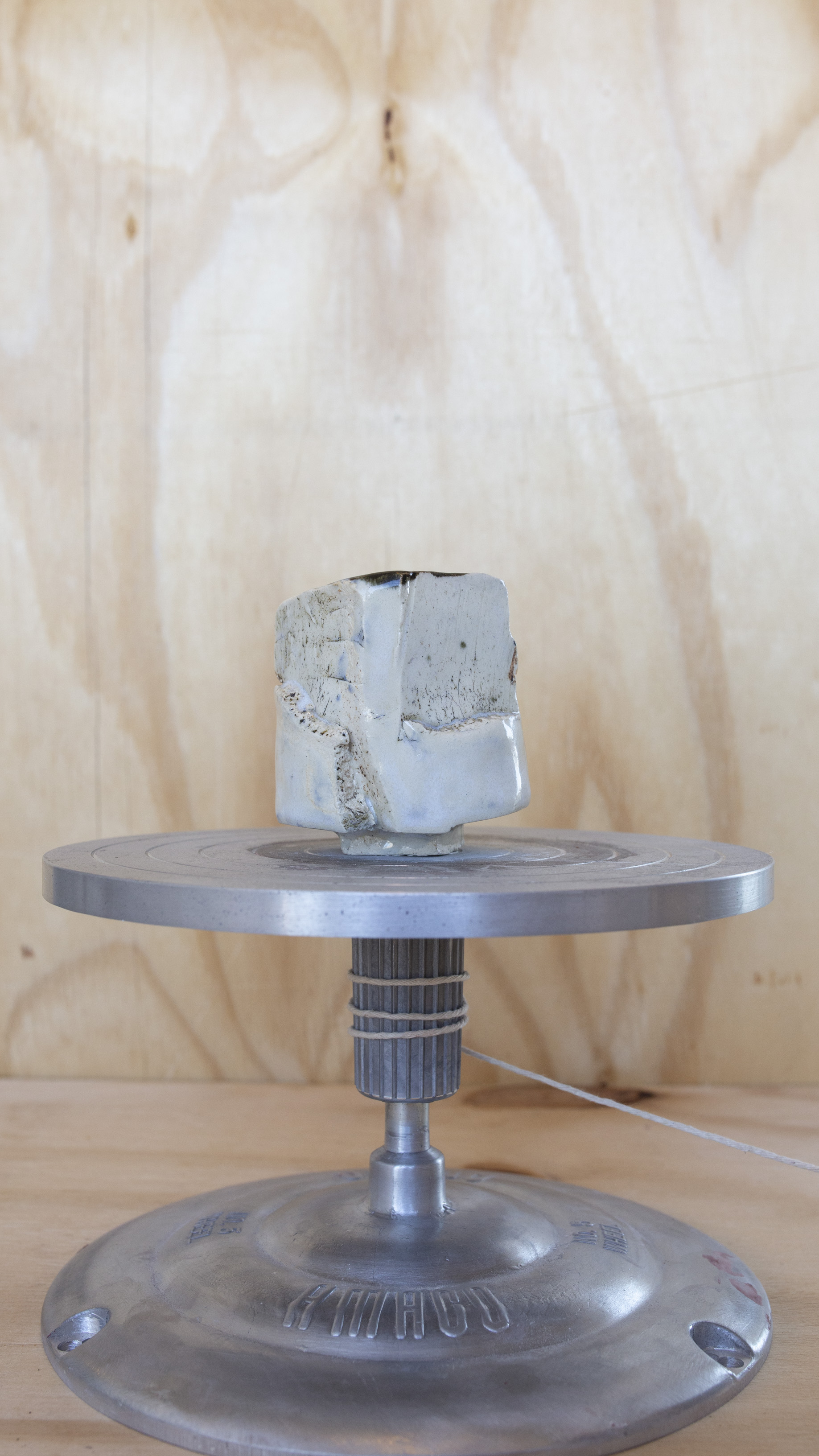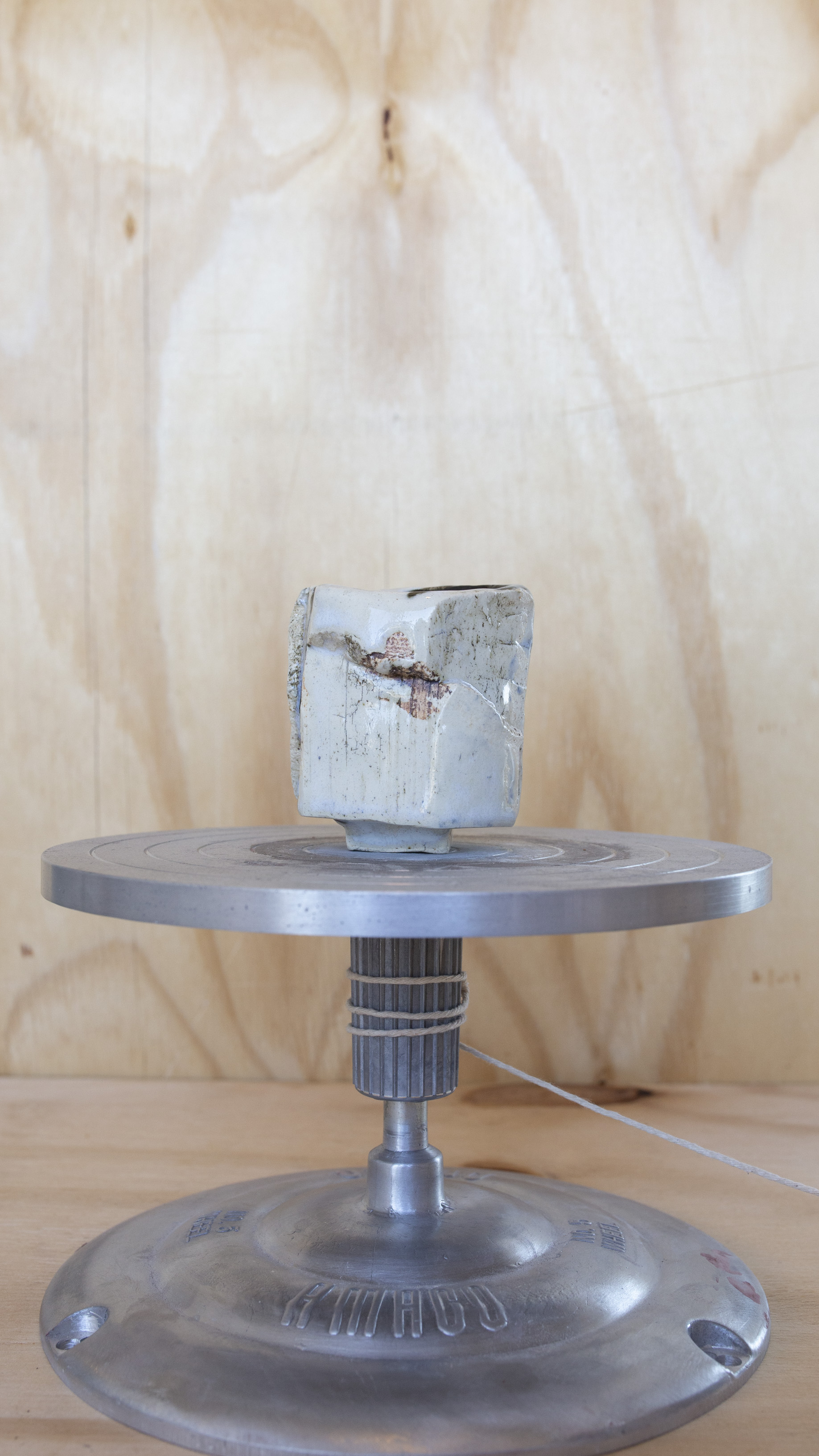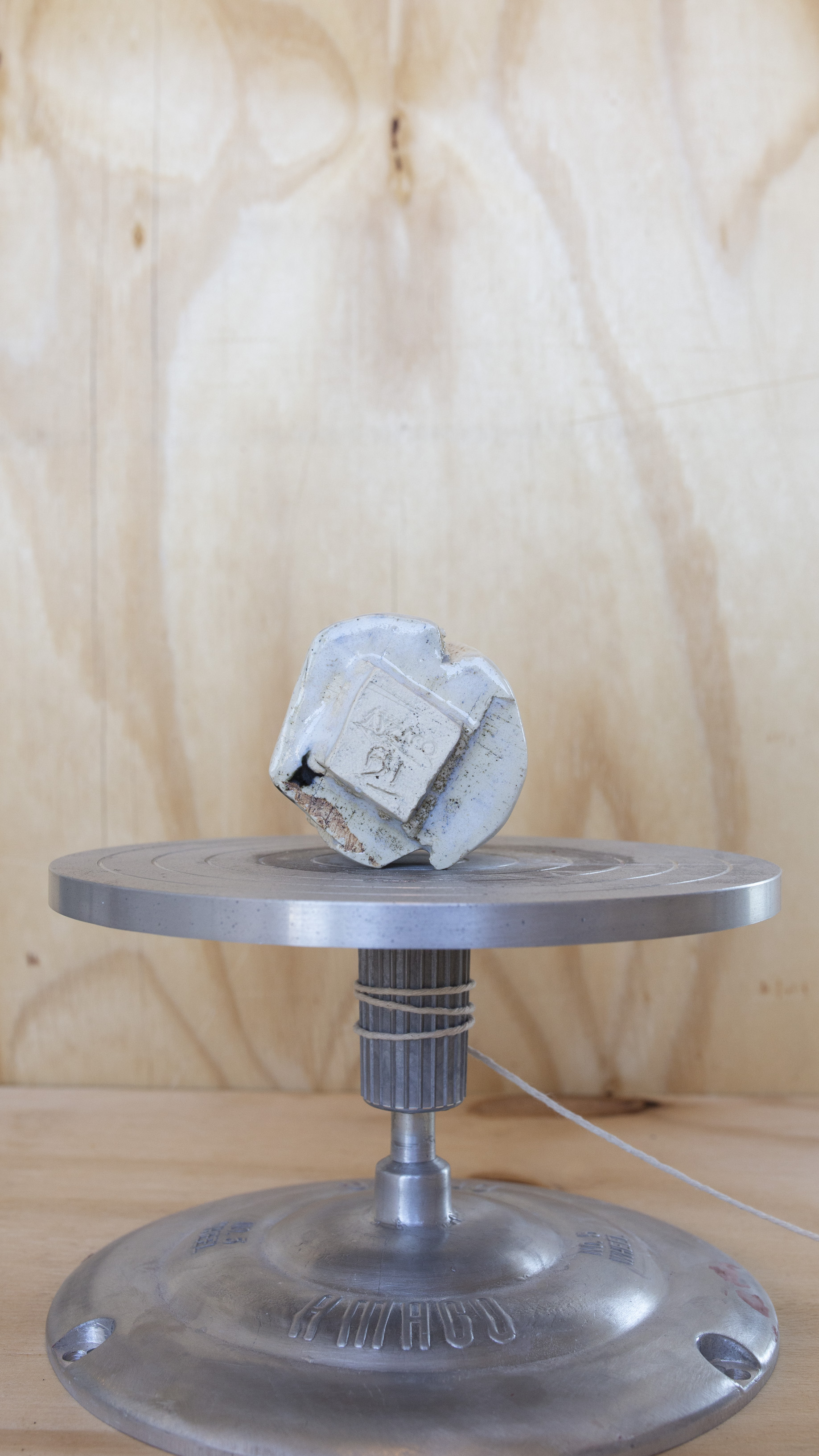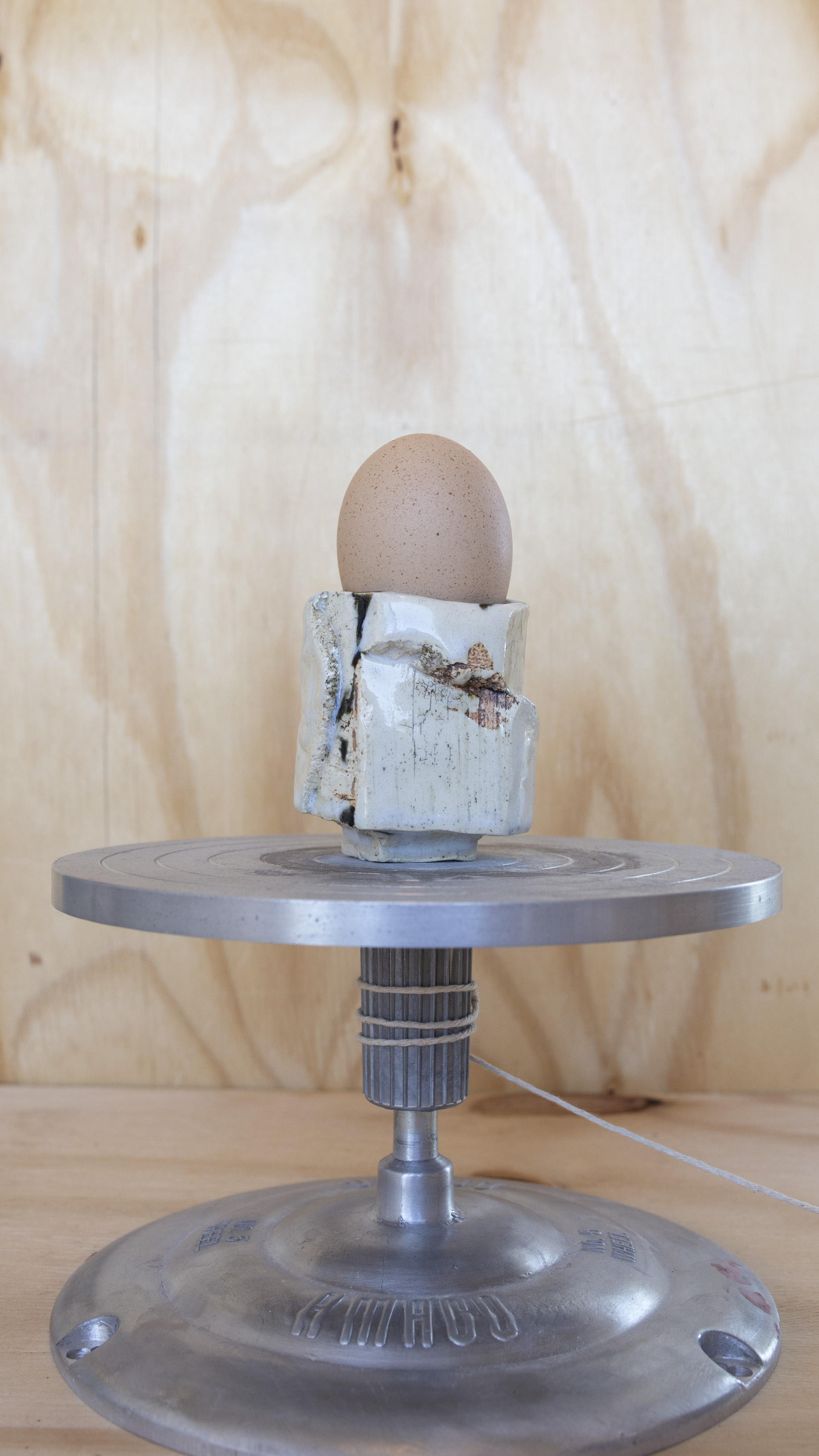Kurinuki Cup no. 1
Kurinuki cup for sake, tea, espresso, and sipping liquor or liquid of choice. No two cups are the same, individually made from a solid cylindrical form of stoneware clay. The finished form and surface is a timestamp of intuitive mark making and a painterly application of glaze — resulting in a spiritual portrait of the maker in that moment.
Dimensions of cup no. 1
- Circumference:
- Diameter:
- Height:
Technique
Kurinuki is a Japanese term referring to the hand building technique of starting with a solid block of clay and hollowing it out to create an interior.
Sculpting Process
Each cup starts as a solid cylindrical form of stoneware clay, shaped by hand.
- The first thing I start on is carving the foot.
- Then
I move from the foot and intuitively carve and sculpt the exterior.
Making various marks and indentations guided by the wisdom of the hand.
- Using the traditional Japanese Kurinuki technique, I hollow out the interior of each vessel.
Firing Process
After carving, sculpting, and hollowing each form, every vessel undergoes two firing processes
- The first firing results in bisqueware, at this phase I intuitively apply stains in various colors and wax to resist the glaze.
- Next, I individually finish each with a coat of clear glaze while finishing the interior with a different color glaze without being too precious, accepting dripping and other poetry glaze offers.
- In the final firing the glaze become activated resulting in the food and dishwasher safe finish you see in the photo.













